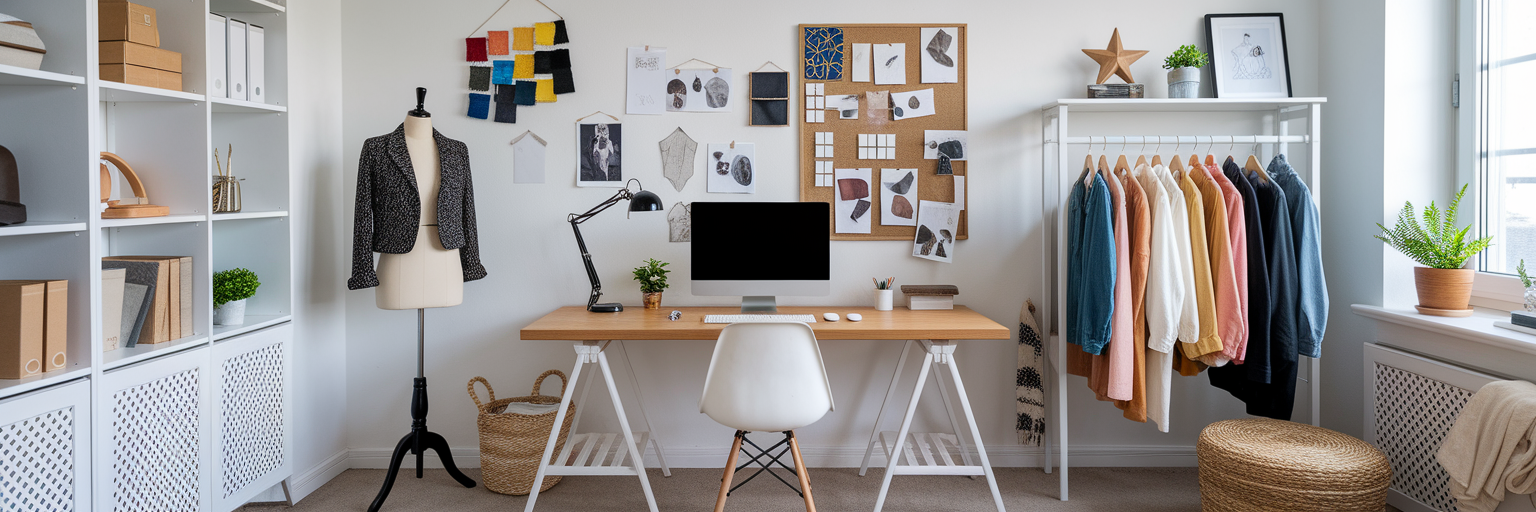5 Proven Ways to Get Your Shopify Clothing Store Found Online
Discover 5 practical strategies to increase your Shopify clothing store's visibility. Learn how to improve your pages, create engaging content, and attract more shoppers.

You have beautiful products and a stunning Shopify store, but getting seen online can feel like shouting into the void. The good news is that you don't need a massive marketing budget to make an impact. A smart clothing store SEO strategy is about making small, consistent changes that help the right customers find you. It starts with understanding how people search for clothes and aligning your store to meet them there.
Build a Strong Technical Foundation
Before you think about creative content or beautiful product photos, you need to ensure your store's technical setup is solid. Think of it as building the foundation of a house. Without it, everything else is unstable. The term "technical SEO" might sound complex, but it boils down to a few essential tasks that make it easy for search engines to find and understand your store.
Here are four critical actions to take:
- Ensure Your Store is Fast and Mobile-Friendly. We’ve all been there, impatiently waiting for a page to load before giving up and leaving. Google prioritizes sites that load quickly and look great on a phone because that's what users want. Use Google's PageSpeed Insights to check your store's performance. A fast, responsive site doesn't just help with rankings; it directly impacts your sales.
- Connect Your Store to Search Engine Tools. You need a direct line of communication with search engines. Setting up Google Search Console and Bing Webmaster Tools gives you a dashboard for your site's health. These free platforms show you how you're performing, flag any indexing problems, and reveal the exact search terms people use to find you. As Shopify explains, setting up these tools is a critical first step, and they provide a clear guide on how to verify your website with Google Search Console to monitor performance.
- Use Clear and Simple URL Structures. A logical URL like
yourstore.com/dresses/summer-maxi-dressis easy for both customers and search engines to understand. It tells them exactly where they are on your site. Avoid the confusing, auto-generated URLs that look like a random string of numbers and letters. - Implement Structured Data (Schema Markup). In simple terms, structured data is a set of labels you add to your site's code to tell search engines precisely what your content is. It can specify product prices, stock levels, and customer reviews. This can lead to eye-catching "rich snippets" in search results, like star ratings under your product name, which helps you stand out and encourages more clicks.
Optimize Your Product and Collection Pages

With a solid technical foundation in place, it's time to focus on your digital storefront: your product and collection pages. This is where you align the words on your site with the words your customers are typing into search engines. Effective Shopify product page SEO is about speaking your customer's language, not just listing product specs.
First, you need to find the words your customers actually use. Do they search for a "chic office jacket," or are they more specific, looking for a "women's black linen blazer"? Thinking from their perspective is the key to connecting with them. Once you know their language, you can write compelling and unique product descriptions. Don't just copy and paste from the manufacturer. Tell a story. Describe the feel of the fabric and paint a picture of how the item will make your customer feel. This helps with both search visibility and conversions.
Your images need attention too. High-quality photos are essential, but their alt text is just as important. Alt text describes an image for visually impaired users and gives search engines context. Instead of a filename like "IMG_1234.jpg," use descriptive text like "model wearing a red silk midi dress with puff sleeves." Finally, craft clear page titles and meta descriptions. These are your store's ad in the search results. The title is the headline, and the description is the short pitch that convinces someone to click. Optimizing your pages is a key part of a successful strategy for any Shopify store, and you can see how we tailor content for different e-commerce niches.
| Page Element | Unoptimized Example (Before) | Optimized Example (After) |
|---|---|---|
| Page Title | Jacket | The Milano Blazer - Women's Black Linen Blazer |
| Product Description | Black jacket. 100% linen. Available in S, M, L. | Feel effortlessly polished in The Milano Blazer. Crafted from 100% breathable Italian linen, this tailored black blazer is perfect for office days or weekend brunch. Its relaxed fit offers all-day comfort. |
| Image Alt Text | IMG_5678 | Model wearing the black linen Milano Blazer with white jeans. |
| URL | yourstore.com/products/item-88231 | yourstore.com/products/womens-black-linen-blazer |
Create Content That Attracts and Engages Shoppers
Not every visitor is ready to buy immediately. A blog is your most powerful tool for attracting shoppers who are still in the inspiration phase. It allows you to become a trusted fashion authority in your niche, building a relationship long before a purchase is made. This is about creating value beyond your products.
Start by developing content that directly relates to what you sell. If your store specializes in sustainable clothing, write articles like "How to Build a Sustainable Wardrobe" or "What to Look for in Eco-Friendly Fabrics." This ensures the traffic you attract is made up of people genuinely interested in your brand's mission. For more ideas, you can find great content marketing inspiration for ecommerce brands online.
Practical, helpful content performs exceptionally well. Think about creating style guides and "how-to" posts. An article on "5 Ways to Style a White T-Shirt" or "A Guide to Choosing the Perfect Jeans" answers common questions your potential customers have. This type of content is highly shareable and drives traffic from people seeking advice. According to Shopify's own experts, creating high-quality blog content enhances topical authority and attracts organic backlinks, which are critical for long-term growth. As you create these posts, remember to internally link from your blog to your products. When you mention a specific blazer or dress, link directly to its product page. This creates a smooth path from inspiration to purchase and shows search engines which pages on your site are most important.
Build Your Brand's Authority and Reach

What other reputable websites say about your brand is a powerful signal to search engines. Building your store's authority across the web is about earning trust and credibility through external validation. This is how you show Google that you are a legitimate and respected player in your niche, which will help you get more traffic Shopify recognizes as high-quality.
Here are three ways to build your brand's reputation:
- Collaborate with Fashion Bloggers and Influencers. You don't need to target huge celebrities. Start with micro-influencers who specialize in your specific niche. Their audiences are often highly engaged and trusting, and a feature or mention from them can provide a valuable backlink and a stamp of approval.
- Seek Mentions in Online Publications and Gift Guides. Proactively look for opportunities to have your products featured. Pitch your items for articles like "Best Linen Shirts for Summer" or seasonal gift guides. A single link from a respected online magazine can significantly boost your store's authority.
- Encourage User-Generated Content and Reviews. Social proof is incredibly powerful. Create a unique hashtag and encourage your customers to share photos of themselves wearing your clothes. Featuring these images on your website provides fresh, authentic content that builds a sense of community and shows new shoppers that your products are loved by real people.
Building authority is an ongoing process, and you can find more strategies for expanding your reach on our blog.
Win Over Your Local Market
Even if your Shopify store ships nationwide, tapping into your local market can be a powerful strategy. Local SEO helps you connect with highly motivated shoppers in your area and builds a layer of credibility that benefits your entire online presence. This is a specialized approach that can help you figure out how to rank Shopify store for searches with local intent.
Here is a checklist for optimizing your local presence:
- Claim and Optimize Your Google Business Profile. This is non-negotiable for any business with a local connection, even if you don't have a physical storefront. Fill out every section completely, including your service areas, hours, photos, and a detailed description of your brand.
- Incorporate Location-Specific Keywords. Think about how local customers search. If you're based in Miami, create content around "Best Dresses for a Miami Wedding." If you're in the Pacific Northwest, a blog post on "Stylish Raincoats for a Seattle Winter" will resonate with local shoppers and capture their searches.
- Gather Local Customer Reviews. Reviews on your Google Business Profile are a major factor for local search rankings. Encourage your happy local customers to leave feedback. Positive reviews build trust with both new shoppers and search engines.
- Partner with Other Local Businesses. Collaborate with non-competing businesses in your area. A clothing boutique could partner with a nearby jewelry maker for a joint promotion or a photoshoot. These partnerships can generate valuable local brand mentions and community goodwill.
Automate Your Content to Stay Consistent
Let's be honest: implementing all these strategies takes time. For a solo founder or a small team, creating content consistently is a huge challenge. This is often why so many businesses struggle to see results from their efforts. Inconsistency is the enemy of growth.
This is precisely the problem we built BlogBuster to solve. It's a plug-and-play engine designed to automate your entire blogging process. It handles everything from identifying relevant topics to writing engaging articles and publishing them directly to your Shopify store. One of the most important Shopify store SEO tips is that consistency is crucial, and automation makes it achievable without the manual effort.
Instead of spending hours every week on content, you can focus on what you love: designing, curating, and selling great clothes. Let a smart system handle the repetitive work. BlogBuster is a full content engine that automates every step, from research to publishing, so you can grow on autopilot.